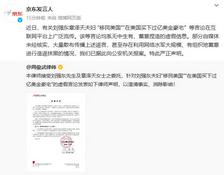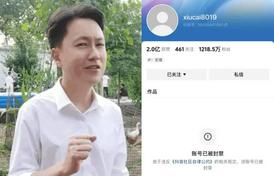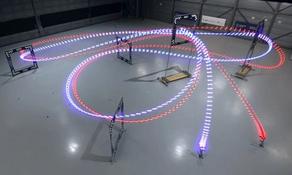前面一篇文章中我们分析了App返回按键的分发流程,从Native层到ViewRootImpl层到DocorView层到Activity层,以及在Activity中的dispatchKeyEvent方法中分发事件,最终调用了Activity的finish方法,即销毁Activity,所以一般情况下假如我们不重写Activity的onBackPress方法或者是onKeyDown方法,当我们按下并抬起返回按键的时候默认都是销毁当前Activity。而本文中我们主要介绍触摸事件的分发流程,从Native层到Activity层触摸事件的分发了流程和按键的分发事件都是类似的,这里我们可以根据异常堆栈信息看一下。
at com.example.aaron.helloworld.MainActivity.dispatchTouchEvent(MainActivity.java:103)
at com.android.internal.policy.impl.PhoneWindow$DecorView.dispatchTouchEvent(PhoneWindow.java:2359)
at android.view.View.dispatchPointerEvent(View.java:8698)
at android.view.ViewRootImpl$ViewPostImeInputStage.processPointerEvent(ViewRootImpl.java:4530)
at android.view.ViewRootImpl$ViewPostImeInputStage.onProcess(ViewRootImpl.java:4388)
at android.view.ViewRootImpl$InputStage.deliver(ViewRootImpl.java:3924)
at android.view.ViewRootImpl$InputStage.onDeliverToNext(ViewRootImpl.java:3977)
at android.view.ViewRootImpl$InputStage.forward(ViewRootImpl.java:3943)
at android.view.ViewRootImpl$AsyncInputStage.forward(ViewRootImpl.java:4053)
at android.view.ViewRootImpl$InputStage.apply(ViewRootImpl.java:3951)
at android.view.ViewRootImpl$AsyncInputStage.apply(ViewRootImpl.java:4110)
at android.view.ViewRootImpl$InputStage.deliver(ViewRootImpl.java:3924)
at android.view.ViewRootImpl$InputStage.onDeliverToNext(ViewRootImpl.java:3977)
at android.view.ViewRootImpl$InputStage.forward(ViewRootImpl.java:3943)
at android.view.ViewRootImpl$InputStage.apply(ViewRootImpl.java:3951)
at android.view.ViewRootImpl$InputStage.deliver(ViewRootImpl.java:3924)
at android.view.ViewRootImpl.deliverInputEvent(ViewRootImpl.java:6345)
at android.view.ViewRootImpl.doProcessInputEvents(ViewRootImpl.java:6301)
at android.view.ViewRootImpl.enqueueInputEvent(ViewRootImpl.java:6254)
at android.view.ViewRootImpl$WindowInputEventReceiver.onInputEvent(ViewRootImpl.java:6507)
at android.view.InputEventReceiver.dispatchInputEvent(InputEventReceiver.java:185)这样经过一系列的方法调用之后最终调用了Activity的dispatchTouchEvent方法,而我们也是从Activiyt的dispatchTouchEvent方法开始对触摸事件的分发进行分析。
在具体查看Activity的dispatchTouchEvent方法之前我们先简单介绍一下触摸事件,触摸事件是由一个触摸按下事件、N个触摸滑动事件和一个触摸抬起事件组成的,通常的一个触摸事件中只能存在一个触摸按下和一个触摸抬起事件,但是触摸滑动事件可以有零个或者多个。好了,知道这个概念以后,下面我们就具体看一下Activity中的dispatchTouchEvent的实现逻辑。
public boolean dispatchTouchEvent(MotionEvent ev) {
if (ev.getAction() == MotionEvent.ACTION_DOWN) {
onUserInteraction();
}
if (getWindow().superDispatchTouchEvent(ev)) {
return true;
}
return onTouchEvent(ev);
}在看一下dispatchTouchEvent方法之前我们首先需要解释一下MotionEvent的概念。MotionEvent是一个触摸动作的封装,里面包含了触摸动作的类型,以及操作等属性,我们具体的可以看一下MotionEvent的说明:
Object used to report movement (mouse, pen, finger, trackball) events. Motion events may hold either absolute or relative movements and other data, depending on the type of device.
然后在dispatchTouchEvent方法中,会首先判断MotionEvent的动作类型,也就是我们的触目动作的类型,判断其是否是“按下”操作,若是的湖泽,则执行onUserInteraction方法,这个方法又是实现了什么逻辑呢?
public void onUserInteraction() {
}可以发现其在Activity中只是一个简单的空实现方法,同样的我们可以看一下该方法的介绍:
Called whenever a key, touch, or trackball event is dispatched to the activity. Implement this method if you wish to know that the user has interacted with the device in some way while your activity is running. This callback and {@link #onUserLeaveHint} are intended to help activities manage status bar notifications intelligently; specifically, for helping activities determine the proper time to cancel a notfication.
理解上就是用户在触屏点击,按home,back,menu键都会触发此方法。
回到Activity的dispatchTouchEvent方法中,我们调用了getWindow().suerDispatchTouchEvent()方法,我们分析过Activity的加载绘制流程,而这里的getWindow()就是返回Activity中的mWindow对象,而我们知道Activity中的mWindow对象就是一个PhoneWindow的实例。并且这里的window.superDispatchTouchEvent若返回值为ture,则直接返回true,否则的话会执行Activity的onTouchEvent方法,继续我们看一下PhoneWindow的superDispatchTouchEvent方法。
@Override
public boolean superDispatchTouchEvent(MotionEvent event) {
return mDecor.superDispatchTouchEvent(event);
}可以看到在PhoneWindow中的superDispatchTouchEvent方法中调用的是mDecor.superDispatchTouchEvent方法,而这里的mDecor是我们Activity显示的ViewTree的根View,并且mDecor是一个FrameLayout的子类,所以这里我们看一下mDecor的superDispatchTouchEvent方法。
private final class DecorView extends FrameLayout implements RootViewSurfaceTaker {
...
public boolean superDispatchTouchEvent(MotionEvent event) {
return super.dispatchTouchEvent(event);
}
...
}在DecorView的superDispatchTouchEvent方法中我们调用了super.dispatchTouchEvent方法,而我们的DecorView继承于FrameLayout,但是经过查看之后我们知道FrameLayout中并没有实现dispatchTouchEvent方法,而由于我们的FrameLayout继承于ViewGroup,所以这里的dispatchTouchEvent方法应该就是ViewGroup的dispatchTouchEvent方法。
好了,这里先暂时说一下Acitivty中的事件分发流程
ViewRootImpl层的事件分发会首先调用Activity的dispatchTouchEvent方法;
Activity的dispatchTouchEvent方法中会通过Window.superDispatchTouchEvent方法将事件传递给DecorView即ViewGroup。
若window的superDispatchTouchEvent方法返回true,则事件分发完成,Activity的dispatchTouchEvent直接返回为true,否则的话调用Activity的onTouchEvent方法,并且Acitivty的dispatchTouchEvent返回值与Activity的onTouchEvent返回值一致。
下面我们在继续看一下ViewGroup的dispatchTouchEvent方法。
public boolean dispatchTouchEvent(MotionEvent ev) {
if (mInputEventConsistencyVerifier != null) {
mInputEventConsistencyVerifier.onTouchEvent(ev, 1);
}
// If the event targets the accessibility focused view and this is it, start
// normal event dispatch. Maybe a descendant is what will handle the click.
if (ev.isTargetAccessibilityFocus() && isAccessibilityFocusedViewOrHost()) {
ev.setTargetAccessibilityFocus(false);
}
boolean handled = false;
if (onFilterTouchEventForSecurity(ev)) {
final int action = ev.getAction();
final int actionMasked = action & MotionEvent.ACTION_MASK;
// Handle an initial down.
if (actionMasked == MotionEvent.ACTION_DOWN) {
// Throw away all previous state when starting a new touch gesture.
// The framework may have dropped the up or cancel event for the previous gesture
// due to an app switch, ANR, or some other state change.
cancelAndClearTouchTargets(ev);
resetTouchState();
}
// Check for interception.
final boolean intercepted;
if (actionMasked == MotionEvent.ACTION_DOWN
|| mFirstTouchTarget != null) {
final boolean disallowIntercept = (mGroupFlags & FLAG_DISALLOW_INTERCEPT) != 0;
if (!disallowIntercept) {
intercepted = onInterceptTouchEvent(ev);
ev.setAction(action); // restore action in case it was changed
} else {
intercepted = false;
}
} else {
// There are no touch targets and this action is not an initial down
// so this view group continues to intercept touches.
intercepted = true;
}
// If intercepted, start normal event dispatch. Also if there is already
// a view that is handling the gesture, do normal event dispatch.
if (intercepted || mFirstTouchTarget != null) {
ev.setTargetAccessibilityFocus(false);
}
// Check for cancelation.
final boolean canceled = resetCancelNextUpFlag(this)
|| actionMasked == MotionEvent.ACTION_CANCEL;
// Update list of touch targets for pointer down, if needed.
final boolean split = (mGroupFlags & FLAG_SPLIT_MOTION_EVENTS) != 0;
TouchTarget newTouchTarget = null;
boolean alreadyDispatchedToNewTouchTarget = false;
if (!canceled && !intercepted) {
// If the event is targeting accessiiblity focus we give it to the
// view that has accessibility focus and if it does not handle it
// we clear the flag and dispatch the event to all children as usual.
// We are looking up the accessibility focused host to avoid keeping
// state since these events are very rare.
View childWithAccessibilityFocus = ev.isTargetAccessibilityFocus()
? findChildWithAccessibilityFocus() : null;
if (actionMasked == MotionEvent.ACTION_DOWN
|| (split && actionMasked == MotionEvent.ACTION_POINTER_DOWN)
|| actionMasked == MotionEvent.ACTION_HOVER_MOVE) {
final int actionIndex = ev.getActionIndex(); // always 0 for down
final int idBitsToAssign = split ? 1 << ev.getPointerId(actionIndex)
: TouchTarget.ALL_POINTER_IDS;
// Clean up earlier touch targets for this pointer id in case they
// have become out of sync.
removePointersFromTouchTargets(idBitsToAssign);
final int childrenCount = mChildrenCount;
if (newTouchTarget == null && childrenCount != 0) {
final float x = ev.getX(actionIndex);
final float y = ev.getY(actionIndex);
// Find a child that can receive the event.
// Scan children from front to back.
final ArrayList<View> preorderedList = buildOrderedChildList();
final boolean customOrder = preorderedList == null
&& isChildrenDrawingOrderEnabled();
final View[] children = mChildren;
for (int i = childrenCount - 1; i >= 0; i--) {
final int childIndex = customOrder
? getChildDrawingOrder(childrenCount, i) : i;
final View child = (preorderedList == null)
? children[childIndex] : preorderedList.get(childIndex);
// If there is a view that has accessibility focus we want it
// to get the event first and if not handled we will perform a
// normal dispatch. We may do a double iteration but this is
// safer given the timeframe.
if (childWithAccessibilityFocus != null) {
if (childWithAccessibilityFocus != child) {
continue;
}
childWithAccessibilityFocus = null;
i = childrenCount - 1;
}
if (!canViewReceivePointerEvents(child)
|| !isTransformedTouchPointInView(x, y, child, null)) {
ev.setTargetAccessibilityFocus(false);
continue;
}
newTouchTarget = getTouchTarget(child);
if (newTouchTarget != null) {
// Child is already receiving touch within its bounds.
// Give it the new pointer in addition to the ones it is handling.
newTouchTarget.pointerIdBits |= idBitsToAssign;
break;
}
resetCancelNextUpFlag(child);
if (dispatchTransformedTouchEvent(ev, false, child, idBitsToAssign)) {
// Child wants to receive touch within its bounds.
mLastTouchDownTime = ev.getDownTime();
if (preorderedList != null) {
// childIndex points into presorted list, find original index
for (int j = 0; j < childrenCount; j++) {
if (children[childIndex] == mChildren[j]) {
mLastTouchDownIndex = j;
break;
}
}
} else {
mLastTouchDownIndex = childIndex;
}
mLastTouchDownX = ev.getX();
mLastTouchDownY = ev.getY();
newTouchTarget = addTouchTarget(child, idBitsToAssign);
alreadyDispatchedToNewTouchTarget = true;
break;
}
// The accessibility focus didn't handle the event, so clear
// the flag and do a normal dispatch to all children.
ev.setTargetAccessibilityFocus(false);
}
if (preorderedList != null) preorderedList.clear();
}
if (newTouchTarget == null && mFirstTouchTarget != null) {
// Did not find a child to receive the event.
// Assign the pointer to the least recently added target.
newTouchTarget = mFirstTouchTarget;
while (newTouchTarget.next != null) {
newTouchTarget = newTouchTarget.next;
}
newTouchTarget.pointerIdBits |= idBitsToAssign;
}
}
}
// Dispatch to touch targets.
if (mFirstTouchTarget == null) {
// No touch targets so treat this as an ordinary view.
handled = dispatchTransformedTouchEvent(ev, canceled, null,
TouchTarget.ALL_POINTER_IDS);
} else {
// Dispatch to touch targets, excluding the new touch target if we already
// dispatched to it. Cancel touch targets if necessary.
TouchTarget predecessor = null;
TouchTarget target = mFirstTouchTarget;
while (target != null) {
final TouchTarget next = target.next;
if (alreadyDispatchedToNewTouchTarget && target == newTouchTarget) {
handled = true;
} else {
final boolean cancelChild = resetCancelNextUpFlag(target.child)
|| intercepted;
if (dispatchTransformedTouchEvent(ev, cancelChild,
target.child, target.pointerIdBits)) {
handled = true;
}
if (cancelChild) {
if (predecessor == null) {
mFirstTouchTarget = next;
} else {
predecessor.next = next;
}
target.recycle();
target = next;
continue;
}
}
predecessor = target;
target = next;
}
}
// Update list of touch targets for pointer up or cancel, if needed.
if (canceled
|| actionMasked == MotionEvent.ACTION_UP
|| actionMasked == MotionEvent.ACTION_HOVER_MOVE) {
resetTouchState();
} else if (split && actionMasked == MotionEvent.ACTION_POINTER_UP) {
final int actionIndex = ev.getActionIndex();
final int idBitsToRemove = 1 << ev.getPointerId(actionIndex);
removePointersFromTouchTargets(idBitsToRemove);
}
}
if (!handled && mInputEventConsistencyVerifier != null) {
mInputEventConsistencyVerifier.onUnhandledEvent(ev, 1);
}
return handled;
}前面我们知道触摸事件是由一个触摸按下事件,一个触摸抬起事件和N个触摸滑动事件组成的,而这里的触摸按下事件就是这里的ACTION_DOWN,同时友谊ACTION_DOWN是一系列事件的开端,所以我们在ACTION_DOWN时进行一些初始化操作,从上面源码中注释也可以看出来,清除以往的Touch状态然后开始新的手势。并在在cancelAndClearTouchTargets(ev)方法中将mFirstTouchTarget设置为了null,接着在resetTouchState()方法中重置Touch状态标识。
然后标记ViewGroup是否拦截Touch事件的传递,if (actionMasked == MotionEvent.ACTION_DOWN || mFirstTouchTarget != null)这一条判断语句说明当事件为ACTION_DOWN或者mFirstTouchTarget不为null(即已经找到能够接收touch事件的目标组件)时if成立,否则if不成立,然后将intercepted设置为true,也即拦截事件。这里说明一下ViewGroup中的onInterceptTouchEvent方法是ViewGroup中特有的方法用于表示是否拦截触摸事件,返回为true的话则表示拦截事件,事件不在向子View中分发,若范围为false的话,则表示不拦截事件,继续分发事件。
public boolean onInterceptTouchEvent(MotionEvent ev) {
return false;
}一般的我们可以在自定义的ViewGroup中重写该方法,用于拦截事件的分发。而当我们在父ViewGroup重写该方法返回为true执行事件拦截的逻辑的时候,可以在子View中通过调用requestDisallowInterceptTouchEvent方法,重新设置父ViewGroup的onInterceptTouchEvent方法为false,不拦截对事件的分发逻辑。
public void requestDisallowInterceptTouchEvent(boolean disallowIntercept) {
if (disallowIntercept == ((mGroupFlags & FLAG_DISALLOW_INTERCEPT) != 0)) {
// We're already in this state, assume our ancestors are too
return;
}
if (disallowIntercept) {
mGroupFlags |= FLAG_DISALLOW_INTERCEPT;
} else {
mGroupFlags &= ~FLAG_DISALLOW_INTERCEPT;
}
// Pass it up to our parent
if (mParent != null) {
mParent.requestDisallowInterceptTouchEvent(disallowIntercept);
}
}比如常见的向我们的ViewPager中由于需要处理左右滑动事件从而在其onInterceptTouchEvent方法中重写了返回值,返回为true,拦截对事件的处理逻辑,但是若这时候ViewPager中嵌套了ListView,则listView也需要处理触摸事件的逻辑,但是ViewPager中已经重写了onInterceptTouchEvent方法,这时候怎么办呢?幸运的是ListView也在内部的实现中调用了requestDisallowInterceptTouchEvent方法,保证自身获得对触摸事件的处理。
然后在代码中我们判断childrenCount个数是否不为0,继续我们获取子View的list集合preorderedList;最后通过一个for循环倒序遍历所有的子view,这是因为preorderedList中的顺序是按照addView或者XML布局文件中的顺序来的,后addView添加的子View,会因为Android的UI后刷新机制显示在上层;假如点击的地方有两个子View都包含的点击的坐标,那么后被添加到布局中的那个子view会先响应事件;也就是说后被添加的子view会浮在上层,点击的时候最上层的那个组件先去响应事件。
然后代码通过调用getTouchTarget去查找当前子View是否在mFirstTouchTarget.next这条target链中的某一个targe中,如果在则返回这个target,否则返回null。在这段代码的if判断通过说明找到了接收Touch事件的子View,即newTouchTarget,那么,既然已经找到了,所以执行break跳出for循环。如果没有break则继续向下执行,这里你可以看见一段if判断的代码if (dispatchTransformedTouchEvent(ev, false, child, idBitsToAssign)),那么这个方法又是执行什么逻辑的呢?
在该方法中为一个递归调用,会递归调用dispatchTouchEvent()方法。在dispatchTouchEvent()中如果子View为ViewGroup并且Touch没有被拦截那么递归调用dispatchTouchEvent(),如果子View为View那么就会调用其onTouchEvent()。dispatchTransformedTouchEvent方法如果返回true则表示子View消费掉该事件。
private boolean dispatchTransformedTouchEvent(MotionEvent event, boolean cancel,
View child, int desiredPointerIdBits) {
final boolean handled;
// Canceling motions is a special case. We don't need to perform any transformations
// or filtering. The important part is the action, not the contents.
final int oldAction = event.getAction();
if (cancel || oldAction == MotionEvent.ACTION_CANCEL) {
event.setAction(MotionEvent.ACTION_CANCEL);
if (child == null) {
handled = super.dispatchTouchEvent(event);
} else {
handled = child.dispatchTouchEvent(event);
}
event.setAction(oldAction);
return handled;
}
// Calculate the number of pointers to deliver.
final int oldPointerIdBits = event.getPointerIdBits();
final int newPointerIdBits = oldPointerIdBits & desiredPointerIdBits;
// If for some reason we ended up in an inconsistent state where it looks like we
// might produce a motion event with no pointers in it, then drop the event.
if (newPointerIdBits == 0) {
return false;
}
// If the number of pointers is the same and we don't need to perform any fancy
// irreversible transformations, then we can reuse the motion event for this
// dispatch as long as we are careful to revert any changes we make.
// Otherwise we need to make a copy.
final MotionEvent transformedEvent;
if (newPointerIdBits == oldPointerIdBits) {
if (child == null || child.hasIdentityMatrix()) {
if (child == null) {
handled = super.dispatchTouchEvent(event);
} else {
final float offsetX = mScrollX - child.mLeft;
final float offsetY = mScrollY - child.mTop;
event.offsetLocation(offsetX, offsetY);
handled = child.dispatchTouchEvent(event);
event.offsetLocation(-offsetX, -offsetY);
}
return handled;
}
transformedEvent = MotionEvent.obtain(event);
} else {
transformedEvent = event.split(newPointerIdBits);
}
// Perform any necessary transformations and dispatch.
if (child == null) {
handled = super.dispatchTouchEvent(transformedEvent);
} else {
final float offsetX = mScrollX - child.mLeft;
final float offsetY = mScrollY - child.mTop;
transformedEvent.offsetLocation(offsetX, offsetY);
if (! child.hasIdentityMatrix()) {
transformedEvent.transform(child.getInverseMatrix());
}
handled = child.dispatchTouchEvent(transformedEvent);
}
// Done.
transformedEvent.recycle();
return handled;
}然后在在ViewGroup的dispatchTransformedTouchEvent方法中,调用了该ViewGroup的child View的dispatchTouchEvent方法,若其子View也是ViewGroup,则重复执行ViewGroup的dispatchTouchEvent方法,若其子View是View,则执行View的dispatchTouchEvent方法。
但这里大概分析了一下ViewGroup的事件分发流程
首先在android的事件分发流程中,通过调用Activity的dispatchTouchEvent,事件会首先被派发是先传递到最顶级的DecorView也就是ViewGroup,再由ViewGroup递归传递到View的。
在ViewGroup中可以通过设置onInterceptTouchEvent方法对事件传递进行拦截,onInterceptTouchEvent方法返回true代表不允许事件继续向子View传递,返回false代表不对事件进行拦截,默认返回false。
下面我们继续看一下View的dispatchTouchEvent方法。
public boolean dispatchTouchEvent(MotionEvent event) {
...
if (onFilterTouchEventForSecurity(event)) {
//noinspection SimplifiableIfStatement
ListenerInfo li = mListenerInfo;
if (li != null && li.mOnTouchListener != null
&& (mViewFlags & ENABLED_MASK) == ENABLED
&& li.mOnTouchListener.onTouch(this, event)) {
result = true;
}
if (!result && onTouchEvent(event)) {
result = true;
}
}
...
return result;
}View的dispatchTouchEvent方法的内容比较长,我们重点看一下View对触摸事件的处理逻辑,首先调用了onFilterTouchEventForSecurity(event)方法判断当前的View是否被遮盖,若没有的话,则判断View的mListenerInfo城边变量是否为空,而这里的mListenerInfo又是什么呢?通过分析源码我们知道这里的mListenerInfo是通过setOnClickListener方法设置的。
public void setOnClickListener(@Nullable OnClickListener l) {
if (!isClickable()) {
setClickable(true);
}
getListenerInfo().mOnClickListener = l;
}可以当前View一旦执行了setOnClickListener方法改View的mListenerInfo就不为空,若后有判断了该View是否可点击,最后是判断View的onTouchListener的onTouch方法的返回值。
所以当我们为当前View设置了OnTouchListener并且返回值为true的话,则直接执行其onTouch方法,若onTouch方法返回为true的话,则直接返回不在执行后续的View的onTouchEvent方法,否则继续执行View的onTouchEvent方法,而我们继续看一下View的onTouchEvent方法的实现逻辑。
public boolean onTouchEvent(MotionEvent event) {
final float x = event.getX();
final float y = event.getY();
final int viewFlags = mViewFlags;
final int action = event.getAction();
if ((viewFlags & ENABLED_MASK) == DISABLED) {
if (action == MotionEvent.ACTION_UP && (mPrivateFlags & PFLAG_PRESSED) != 0) {
setPressed(false);
}
// A disabled view that is clickable still consumes the touch
// events, it just doesn't respond to them.
return (((viewFlags & CLICKABLE) == CLICKABLE
|| (viewFlags & LONG_CLICKABLE) == LONG_CLICKABLE)
|| (viewFlags & CONTEXT_CLICKABLE) == CONTEXT_CLICKABLE);
}
if (mTouchDelegate != null) {
if (mTouchDelegate.onTouchEvent(event)) {
return true;
}
}
if (((viewFlags & CLICKABLE) == CLICKABLE ||
(viewFlags & LONG_CLICKABLE) == LONG_CLICKABLE) ||
(viewFlags & CONTEXT_CLICKABLE) == CONTEXT_CLICKABLE) {
switch (action) {
case MotionEvent.ACTION_UP:
boolean prepressed = (mPrivateFlags & PFLAG_PREPRESSED) != 0;
if ((mPrivateFlags & PFLAG_PRESSED) != 0 || prepressed) {
// take focus if we don't have it already and we should in
// touch mode.
boolean focusTaken = false;
if (isFocusable() && isFocusableInTouchMode() && !isFocused()) {
focusTaken = requestFocus();
}
if (prepressed) {
// The button is being released before we actually
// showed it as pressed. Make it show the pressed
// state now (before scheduling the click) to ensure
// the user sees it.
setPressed(true, x, y);
}
if (!mHasPerformedLongPress && !mIgnoreNextUpEvent) {
// This is a tap, so remove the longpress check
removeLongPressCallback();
// Only perform take click actions if we were in the pressed state
if (!focusTaken) {
// Use a Runnable and post this rather than calling
// performClick directly. This lets other visual state
// of the view update before click actions start.
if (mPerformClick == null) {
mPerformClick = new PerformClick();
}
if (!post(mPerformClick)) {
performClick();
}
}
}
if (mUnsetPressedState == null) {
mUnsetPressedState = new UnsetPressedState();
}
if (prepressed) {
postDelayed(mUnsetPressedState,
ViewConfiguration.getPressedStateDuration());
} else if (!post(mUnsetPressedState)) {
// If the post failed, unpress right now
mUnsetPressedState.run();
}
removeTapCallback();
}
mIgnoreNextUpEvent = false;
break;
case MotionEvent.ACTION_DOWN:
mHasPerformedLongPress = false;
if (performButtonActionOnTouchDown(event)) {
break;
}
// Walk up the hierarchy to determine if we're inside a scrolling container.
boolean isInScrollingContainer = isInScrollingContainer();
// For views inside a scrolling container, delay the pressed feedback for
// a short period in case this is a scroll.
if (isInScrollingContainer) {
mPrivateFlags |= PFLAG_PREPRESSED;
if (mPendingCheckForTap == null) {
mPendingCheckForTap = new CheckForTap();
}
mPendingCheckForTap.x = event.getX();
mPendingCheckForTap.y = event.getY();
postDelayed(mPendingCheckForTap, ViewConfiguration.getTapTimeout());
} else {
// Not inside a scrolling container, so show the feedback right away
setPressed(true, x, y);
checkForLongClick(0);
}
break;
case MotionEvent.ACTION_CANCEL:
setPressed(false);
removeTapCallback();
removeLongPressCallback();
mInContextButtonPress = false;
mHasPerformedLongPress = false;
mIgnoreNextUpEvent = false;
break;
case MotionEvent.ACTION_MOVE:
drawableHotspotChanged(x, y);
// Be lenient about moving outside of buttons
if (!pointInView(x, y, mTouchSlop)) {
// Outside button
removeTapCallback();
if ((mPrivateFlags & PFLAG_PRESSED) != 0) {
// Remove any future long press/tap checks
removeLongPressCallback();
setPressed(false);
}
}
break;
}
return true;
}
return false;
}在ACTION为MotionEvent.ACTION_UP时,我们经过层层调用最终执行了performClick,方法而这个方法中我们回调了View的OnClickListener的onClick方法。。。
public boolean performClick() {
final boolean result;
final ListenerInfo li = mListenerInfo;
if (li != null && li.mOnClickListener != null) {
playSoundEffect(SoundEffectConstants.CLICK);
li.mOnClickListener.onClick(this);
result = true;
} else {
result = false;
}
sendAccessibilityEvent(AccessibilityEvent.TYPE_VIEW_CLICKED);
return result;
}所以View组件分发触摸事件的时候:
View控件会首先执行dispatchTouchEvent方法。
View控件在dispatchTouchEvent方法中先执行onTouch方法,后执行onClick方法。
View的onTouch返回false或者mOnTouchListener为null(控件没有设置setOnTouchListener方法)或者控件不是enable的情况下会调运onTouchEvent,dispatchTouchEvent返回值与onTouchEvent返回一样。
View控件不是enable的,那么即使设置了onTouch方法也不会执行,只能通过重写控件的onTouchEvent方法处理,dispatchTouchEvent返回值与onTouchEvent返回一样。
如果控件(View)是enable且onTouch返回true情况下,dispatchTouchEvent直接返回true,不会调用onTouchEvent方法。
参考: http://blog.csdn.net/xiaanming/article/details/21696315 http://blog.csdn.net/guolin_blog/article/details/9097463 http://blog.csdn.net/guolin_blog/article/details/9153747
另外对android源码解析方法感兴趣的可参考我的:
android源码解析之(一)-->android项目构建过程
android源码解析之(二)-->异步消息机制
android源码解析之(三)-->异步任务AsyncTask
android源码解析之(四)-->HandlerThread
android源码解析之(五)-->IntentService
android源码解析之(六)-->Log
android源码解析之(七)-->LruCache
android源码解析之(八)-->Zygote进程启动流程
android源码解析之(九)-->SystemServer进程启动流程
android源码解析之(十)-->Launcher启动流程
android源码解析之(十一)-->应用进程启动流程
android源码解析之(十二)-->系统启动并解析Manifest的流程
android源码解析之(十三)-->apk安装流程
android源码解析之(十四)-->Activity启动流程
android源码解析之(十五)-->Activity销毁流程
android源码解析(十六)-->应用进程Context创建流程
android源码解析(十七)-->Activity布局加载流程
android源码解析(十八)-->Activity布局绘制流程
android源码解析(十九)-->Dialog加载绘制流程
android源码解析(二十)-->Dialog取消绘制流程
android源码解析(二十一)-->PopupWindow加载绘制流程
android源码解析(二十二)-->Toast加载绘制流程
android源码解析(二十三)-->Android异常处理流程
android源码解析(二十四)-->onSaveInstanceState执行时机
android源码解析(二十五)-->onLowMemory执行流程
android源码解析(二十六)-->截屏事件流程
android源码解析(二十七)-->HOME事件流程
android源码解析(二十八)-->电源开关机按键事件流程
android源码解析(二十九)-->应用程序返回按键执行流程
京东创始人刘强东和其妻子章泽天最近成为了互联网舆论关注的焦点。有关他们“移民美国”和在美国购买豪宅的传言在互联网上广泛传播。然而,京东官方通过微博发言人发布的消息澄清了这些传言,称这些言论纯属虚假信息和蓄意捏造。
日前,据博主“@超能数码君老周”爆料,国内三大运营商中国移动、中国电信和中国联通预计将集体采购百万台规模的华为Mate60系列手机。
据报道,荷兰半导体设备公司ASML正看到美国对华遏制政策的负面影响。阿斯麦(ASML)CEO彼得·温宁克在一档电视节目中分享了他对中国大陆问题以及该公司面临的出口管制和保护主义的看法。彼得曾在多个场合表达了他对出口管制以及中荷经济关系的担忧。
今年早些时候,抖音悄然上线了一款名为“青桃”的 App,Slogan 为“看见你的热爱”,根据应用介绍可知,“青桃”是一个属于年轻人的兴趣知识视频平台,由抖音官方出品的中长视频关联版本,整体风格有些类似B站。
日前,威马汽车首席数据官梅松林转发了一份“世界各国地区拥车率排行榜”,同时,他发文表示:中国汽车普及率低于非洲国家尼日利亚,每百户家庭仅17户有车。意大利世界排名第一,每十户中九户有车。
近日,一项新的研究发现,维生素 C 和 E 等抗氧化剂会激活一种机制,刺激癌症肿瘤中新血管的生长,帮助它们生长和扩散。
据媒体援引消息人士报道,苹果公司正在测试使用3D打印技术来生产其智能手表的钢质底盘。消息传出后,3D系统一度大涨超10%,不过截至周三收盘,该股涨幅回落至2%以内。
9月2日,坐拥千万粉丝的网红主播“秀才”账号被封禁,在社交媒体平台上引发热议。平台相关负责人表示,“秀才”账号违反平台相关规定,已封禁。据知情人士透露,秀才近期被举报存在违法行为,这可能是他被封禁的部分原因。据悉,“秀才”年龄39岁,是安徽省亳州市蒙城县人,抖音网红,粉丝数量超1200万。他曾被称为“中老年...
9月3日消息,亚马逊的一些股东,包括持有该公司股票的一家养老基金,日前对亚马逊、其创始人贝索斯和其董事会提起诉讼,指控他们在为 Project Kuiper 卫星星座项目购买发射服务时“违反了信义义务”。
据消息,为推广自家应用,苹果现推出了一个名为“Apps by Apple”的网站,展示了苹果为旗下产品(如 iPhone、iPad、Apple Watch、Mac 和 Apple TV)开发的各种应用程序。
特斯拉本周在美国大幅下调Model S和X售价,引发了该公司一些最坚定支持者的不满。知名特斯拉多头、未来基金(Future Fund)管理合伙人加里·布莱克发帖称,降价是一种“短期麻醉剂”,会让潜在客户等待进一步降价。
据外媒9月2日报道,荷兰半导体设备制造商阿斯麦称,尽管荷兰政府颁布的半导体设备出口管制新规9月正式生效,但该公司已获得在2023年底以前向中国运送受限制芯片制造机器的许可。
近日,根据美国证券交易委员会的文件显示,苹果卫星服务提供商 Globalstar 近期向马斯克旗下的 SpaceX 支付 6400 万美元(约 4.65 亿元人民币)。用于在 2023-2025 年期间,发射卫星,进一步扩展苹果 iPhone 系列的 SOS 卫星服务。
据报道,马斯克旗下社交平台𝕏(推特)日前调整了隐私政策,允许 𝕏 使用用户发布的信息来训练其人工智能(AI)模型。新的隐私政策将于 9 月 29 日生效。新政策规定,𝕏可能会使用所收集到的平台信息和公开可用的信息,来帮助训练 𝕏 的机器学习或人工智能模型。
9月2日,荣耀CEO赵明在采访中谈及华为手机回归时表示,替老同事们高兴,觉得手机行业,由于华为的回归,让竞争充满了更多的可能性和更多的魅力,对行业来说也是件好事。
《自然》30日发表的一篇论文报道了一个名为Swift的人工智能(AI)系统,该系统驾驶无人机的能力可在真实世界中一对一冠军赛里战胜人类对手。
近日,非营利组织纽约真菌学会(NYMS)发出警告,表示亚马逊为代表的电商平台上,充斥着各种AI生成的蘑菇觅食科普书籍,其中存在诸多错误。
社交媒体平台𝕏(原推特)新隐私政策提到:“在您同意的情况下,我们可能出于安全、安保和身份识别目的收集和使用您的生物识别信息。”
2023年德国柏林消费电子展上,各大企业都带来了最新的理念和产品,而高端化、本土化的中国产品正在不断吸引欧洲等国际市场的目光。
罗永浩日前在直播中吐槽苹果即将推出的 iPhone 新品,具体内容为:“以我对我‘子公司’的了解,我认为 iPhone 15 跟 iPhone 14 不会有什么区别的,除了序(列)号变了,这个‘不要脸’的东西,这个‘臭厨子’。









